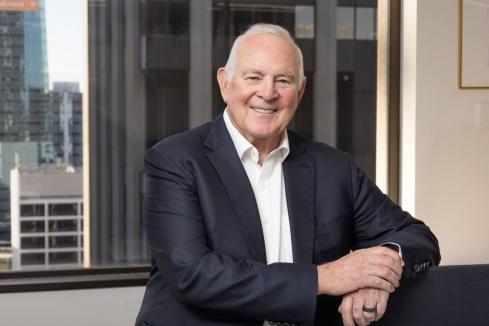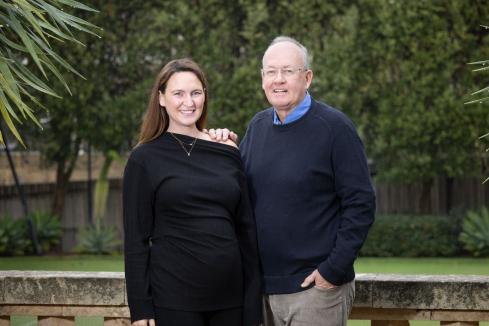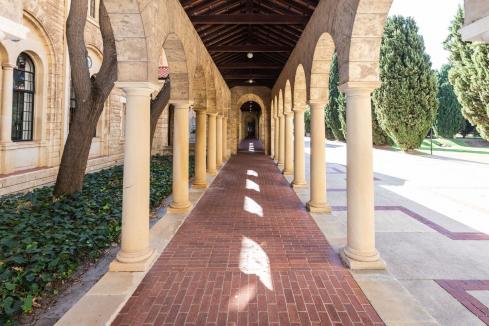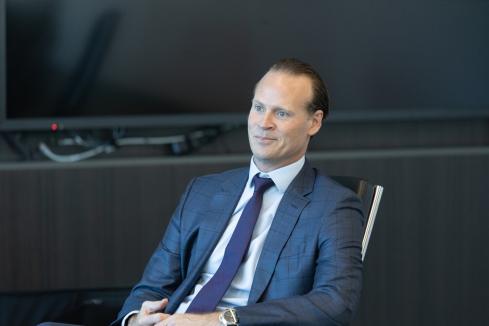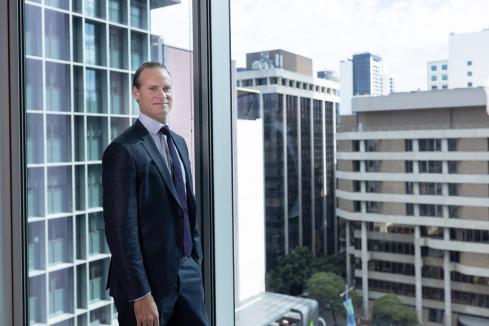International educators say they can see light at the end of a very long tunnel.


THE last time WA Business News sat down with representatives from the international education sector, the mood was downcast.
A perfect storm of uncertainty over government policy, college closures, perceived violence against Indian students and the rising Australian dollar had led to enrolments by international students in Western Australia plummeting by 30 per cent.
Now, six months later, the situation is less urgent, but still dire.
Overall commencements for 2010 in WA are down 9 per cent on 2009, and commencements of the weathervane English language (ELICOS) courses are down 21 per cent.
And although the government has made some headway into easing regulations, much work remains.
As one industry insider suggested, there’s now a faint glimmer of light at the end of the tunnel.
“Six months ago,” the source said, “we couldn’t even see the tunnel.”
The story so far
Many of the problems within the sector began in the lead up to the 2010 election, when both major parties markedly tightened their immigration policies.
Student visa recipients became tied up in a debate over asylum seekers and visa rorts, despite the International Education Association finding only 10 per cent of foreign students will become permanent residents once they have completed their course.
In April 2010, the federal government announced it was increasing the amount of money students needed to prove they could self-fund their time in Australia from $12,000 to $18,000 per year.
This confirmed Australian student visas as the most expensive among the big five English-language players in international education.
According to the institute, it will cost a single student at least $36,000 to study for one year in Australia, compared to just $10,000 in New Zealand, $23,600 in the UK and $25,000 in Canada.
Only in the US, where individual universities decide cost-of-living arrangements, was there the potential to outstrip Australian expenses.
Australian student visa fees alone are almost treble those of the four main rivals. At $550, the initial cost of studying in Australia is dramatically higher than in the US ($142), the UK ($354), Canada ($124), and New Zealand ($152).
At the same time as raising the self-support threshold, the government also tightened regulations around student visas, including limiting access to online visa services and raising course requirements.
Combine this with an Australian dollar that spent much of the year heading towards, and then hovering around, parity with the US currency, and a spate of attacks on Indian students, and the result was extreme pressure on a sector often cited as Australia’s third largest export industry.
Policy changes
After an outcry from the industry faced with dwindling enrolment numbers, the federal government began taking steps to dilute its crackdown.
It announced in December an immediate review of the international education sector, and called upon providers and industry bodies to share their views.
Providers and peak bodies speaking to WA Business News say they are hoping the review leads to greater recognition of the importance of the sector to the national economy and the way the world sees Australia.
They’re hoping for a streamlined process for students and providers, who have to deal with up to five government departments across state and federal levels.
But most of all, they’re hoping for a period of consistency after 18 months of chaos to give the sector time to recover and re-establish trust with overseas agencies, which shy away from instability.
Perth International College of English managing director John Paxton said abrupt changes in visa regulations left many potential international students with the idea that Australia did not want them.
Milner International College of English director Warren Milner said he was hoping for less red tape and regulation.
“I think the general feeling is that the government is now doing good things, but it needs to do more, and more quickly,” he said.
Navitas chief executive Rod Jones, whose company is Australia’s largest provider of education for foreign students, is hoping for a peak body comprised of government and business to steer policy in the sector, to prevent a repeat of the events of 2009 and 2010.
All the industry insiders WA Business News spoke to were in agreement that more regulation of the sector wasn’t needed; rather, proper enforcement of the regulations already in existence was required.
Mr Paxton said the latest reforms requiring all providers to re-register assumed that all colleges could be “visa shops”.
“We’re all pleased that the issue of these dodgy providers is being addressed,” he said. “It’s not what the government is doing that is the problem, it’s how they’re doing it.”
In November, the government also announced a change to the assessment level of higher education diplomas, aligning them with degrees instead of vocational qualifications, meaning applicants needed less money in the bank to study in Australia.
In another round of changes, legislation to further regulate providers, designed to eliminate any remaining unscrupulous colleges, has been approved by a Senate committee but remained in limbo over the summer parliamentary break.
Currency Vs policy
Coupled with constantly changing policy has been the rise in the Australian dollar, making Australia an even less attractive place to study for students of most nationalities.
Providers are divided on the significance of the Australian dollar – all agree it is a factor in the decline in student numbers, but they disagree on just how big that factor is.
For Mr Paxton, the strong dollar is the “biggest overarching factor”.
“You’ve also got to factor in the GFC as well,” he said. “The GFC creates less money, so then you have to go to the cheapest option, and the cheapest option is not Australia because of the Australian dollar.”
Mr Jones said government policy had been the key cause of the downturn, but acknowledged the coupling of a strong Australian dollar with depreciating British and Euro currencies as increasing the impact.
Perth Education City director Mike Ryan said government policy had now been eclipsed by the dollar as the strongest factor driving students away from our shores.
“The regulatory change is behind us now,” he said. “Right now it’s the dollar that’s the issue.”
Why WA?
Industry leaders are at a loss to say why WA has been hit so hard by the fall in the number of students studying ELICOS courses.
The Department of Training and Workforce Development in WA says enrolments last year were down 17 per cent, compared to a national average of just 9 per cent. Commencements over the same period dropped 21 per cent.
Mr Jones thinks the drop can be attributed to the fact that pre-university English courses are more common in WA, and these are the courses that are suffering the biggest falls in numbers.
Mr Milner said he was baffled at the gap between WA and the national average.
He said he thought WA and Queensland, which also suffered large falls, were more desirable destinations for students than other cities in Australia.
Mr Milner said perhaps there was an element of “flavour of the month”, where word-of-mouth creates a trend around particular destinations.
Unis brace for drops
With ELICOS commencements down so significantly, WA’s universities are looking to see what they can do to minimise falls in their enrolments.
ELICOS is frequently called the canary in the cage in international education, as many students first study English before moving on to a higher qualification.
Murdoch, Edith Cowan and Curtin universities all reported a slight downturn (well under 10 per cent) in overseas student enrolments between 2009 and 2010, with mixed results expected for 2011.
While the decline has been small, WA’s universities aren’t taking any chances, investing heavily in offshore centres, minimising the impact of the strong dollar, and marketing their brand.
Murdoch University acting vice-chancellor Gary Martin said the university was offering a scholarship designed to offset the gains of the Australian dollar.
“That scholarships program provided students commencing in some Murdoch courses with a part tuition fee waiver, which could be used to offset travel costs to and from WA and assist with settling in expenses,” Professor Martin said.
He said Murdoch had experienced growth in its offshore campuses, particularly Singapore and Dubai.
“I suspect this was because staying at home to study an Australian qualification presented an affordable option to overseas students faced with increased costs,” Professor Martin said.
He said Murdoch appeared to be bucking the trend, with onshore foreign enrolments up 24 per cent on this time last year.
At Curtin, where the majority of the state’s foreign tertiary students are educated, enrolments look to be less than 10 per cent down on the same period last year.
Dean of International Development Simon Ridings said he hoped the government’s review would relax visa requirements and inject more common sense into the system as recognition of the importance of the sector.
Edith Cowan University is expecting a similar decline this year to the one experienced last year, but would not provide numbers.
Vice-chancellor Kerry Cox said he thought the decline would remain until the government rectified its policies.
Finding a fix
Those in the sector say it will take time to repair the damage done to Australia’s reputation as a stable, affordable and welcoming place for students.
Changing policy has made the country appear unstable to students and the influential agents that negotiate their passage here.
Mr Ryan said it had taken years to establish relationships with agents and nations and Perth Education City was working to re-assure stakeholders Australia was still a high quality provider of education.
Mr Paxton said the importance of foreign students was not just registered in enrolment fees, but in their use of and involvement in part-time employment, accommodation, food and entertainment.
“These students go back home as ambassadors for Perth,” he said.
“That has immeasurable economic benefits in the future.”
And for those feeling as pessimistic about the situations as providers were six months ago, Mr Ryan has some good news.
“Australian Education International estimates the number of students looking to study overseas will increase to 8 million by 2025,” Mr Ryan said.
“Yes, it’s becoming more competitive, but there are more students than ever looking to study overseas.”








